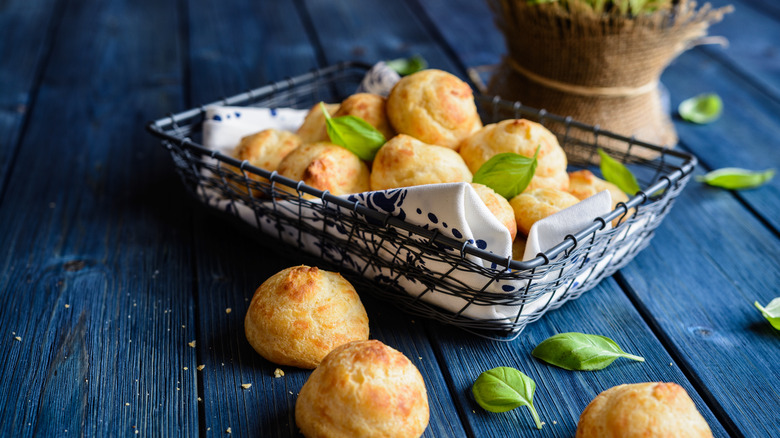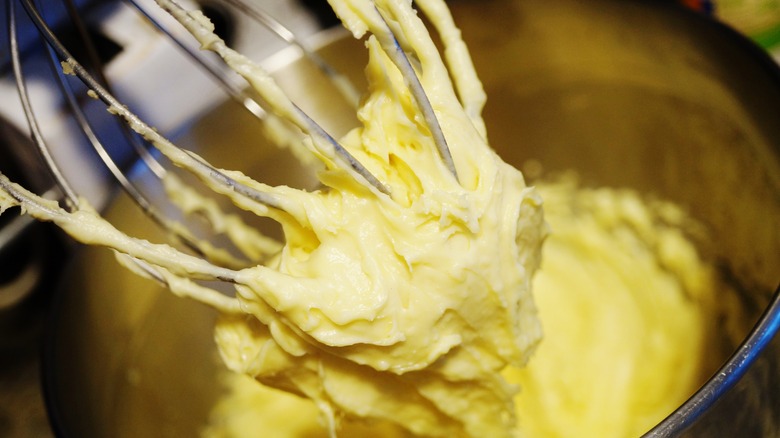How Long You Should Be Cooking The Pâte à Choux For Gougères
As legendary French chef Julia Child observed, "In France, cooking is a serious art form and a national sport." From baguettes to oysters, France has had an undeniable influence on the culinary world. But, it would be impossible to talk about French food without mentioning gougères.
According to gastronomic history, the first recorded evidence of gougères dates back to 1571 on a dinner menu in Sens, France, per Explore France. Although, like most things, the story changes depending on who you ask. French village Flogny-la-Chapelle calls itself the "Gougères Capital of the World," attributing its creation to a pastry chef named Liénard who lived in the village during the 1800s. (Flogny-la-Chapelle even holds an annual festival dedicated to the pastry every May.)
Gougères (pronounced GOO-jher-s) are savory pastry balls baked with cheese, typically Gruyère or Comté. Don't get it twisted, though — they're nothing like American garlic knots. Gougères are characteristically light and airy, like cream puffs, from pastry's famed dough called pâte à choux. The Institute of Culinary Education lauds pâte à choux as "the essential pastry." The name itself translates to "cabbage paste" (for some reason), and Catherine de Medici's bakers made it as early as 1540. The best part is that you don't have to go to a French restaurant to give gougères a try; they're relatively easy to make at home. How long should you be cooking the pâte à choux?
Look for texture and aroma
Despite the dough's fame, it's made from a simple lineup of ingredients: water, butter, salt, flour, and eggs (via King Arthur Baking). But, since so few ingredients are used in pâte à choux, nailing the baking technique is everything behind a successful finished product. Here's how to get it right and knock those gougères out of the park.
Pâte à choux batter is cooked on a stovetop to form a thick paste. All the ingredients except for the flour are added to a saucepan and brought to a boil, then the flour is added all at once before being heated through once more (per King Arthur Baking). Then, after the dough cools, the eggs are beaten in one at a time.
According to The Kitchn, it's essential to cook pâte à choux for long enough that the moisture disappears so that the eggs can be easily absorbed later on. To ensure you've cooked your paste long enough, they say to look for a mashed-potato-like texture and a nutty aroma. Then, you can go ahead and shape your pâte à choux into balls and get those gougères in the oven. If you're entertaining in a hurry, The New York Times says you can make the dough ahead of time, roll it into balls, and pop 'em in the freezer to bake later at cocktail hour. (Just make sure to leave the frozen dough in the oven for a few minutes more than usual.)

